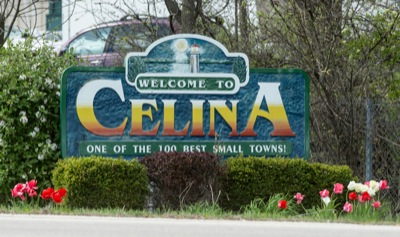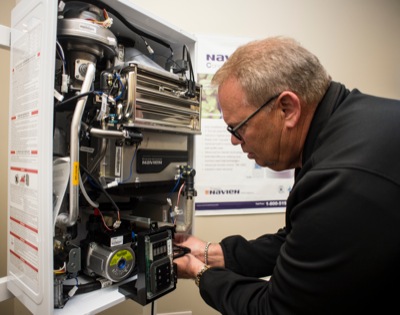Tuesday, April 26th, 2016
Celina gains $8M water grant
By William Kincaid
CELINA - The state has awarded an $8 million grant to the city to improve the quality of its drinking water, which is now drawn from Grand Lake.
Mayor Jeff Hazel said the city "exceeds every safe drinking-water criteria that's currently on the books." However, it's in the city's best interest to develop a long-term plan to ensure "we always have safe drinking water for our community."
"There's about roughly three to four months a year when the weather gets really hot, where there's some tremendous challenges with the algae blooms," Hazel said after Monday night's regular council meeting. "We want to look at how can we do this better for our community, not just today but when we look in the future as well."
Council members unanimously approved an ordinance accepting the Ohio Environmental Protection Agency's Drinking Water Solutions Grant that will provide $8 million over two years. City officials must use the money either to relocate its water treatment facility, partner with another political subdivision to access water sources, establish pipelines to access suitable water resources or treat water to supply drinking water.
Hazel said the city will first hire a consulting firm to analyze the city's water treatment plant as well as search for alternative water sources.
"There's a number of things we're going to look at to try to develop this long-term plan," Hazel told the newspaper. "We don't want to do anything as a knee-jerk reaction. What we're trying to do is something that's a long-term solution for our community going forward."
Councilman Mike Sovinski asked if the city would commit itself to spending money by accepting the grant.
"Not at this time," Hazel replied.
Sovinski said it would be silly not to accept the grant.
"Long-term, we have to address our water-quality issues for our drinking system," he said.
Officials are unsure how the money will be disbursed to Celina but pointed out the grant doesn't require a local match, Hazel said.
In July, Ohio Senate President Keith Faber, R-Celina, told the newspaper the state's two-year budget contains funding to help communities, specifically Celina, improve drinking-water quality.
Celina met the grant criteria of being located in both the Lake Erie and Ohio River drainage basins and "subject to the Great Lake-St. Lawrence River Basin Water Resources Compact."
The compact heavily restricts diversions of water from the Great Lakes Watershed. Groundwater cannot be drawn from the watershed unless it eventually is returned as treated effluent. Celina's sewage treatment plant lies south of the continental divide and its discharge flows away from the watershed.
Any city well would likely draw from a strong north-south flow of water that closely follows the ancient Teays River Valley. But the geographic area is limited because of the continental divide issue.
"We, of course, are on that edge of the continental divide so we've got the north and south issue," Hazel said. "We know the Teays River Valley has got some tremendous challenges from oil wells that were dug over 100 years ago.
"There's not a lot of good viable water sources when you go to the west of Celina, a lot more shallow wells," Hazel continued. "We're looking, 'what can we do?' "
The grant, Hazel said, will provide for a great planning tool, allow for the evaluation of the water treatment plant and "also identify some different sources that perhaps we could use that maybe we're not thinking about right now."
Over the last few years, multiple well sites in every direction have been tested.
City officials late last summer abandoned the search for an underground source of drinking water after recent tests of regional wells detected contamination levels that would be too costly to treat.
None proved to be a viable long-term fit due to high mineral content that would force the city to spend more on treatment. Celina spends about half a million dollars annually to treat its drinking water.
According to water plant superintendent Mike Sudman, the treatment facility is not designed to treat water five to six times as hard as lake water. Even with more chemicals, the plant wouldn't be able to reduce the water hardness to levels to which consumers are accustomed, he had said.
In early 2015, officials had their sights set on more than 16 acres of land north of state Route 703 - farmland and wooded area that John J. Bertke and James F. Lampert were willing to sell to Celina for $750,000 for potential water wells. Their hopes were dashed after tests revealed the water was too hard.




